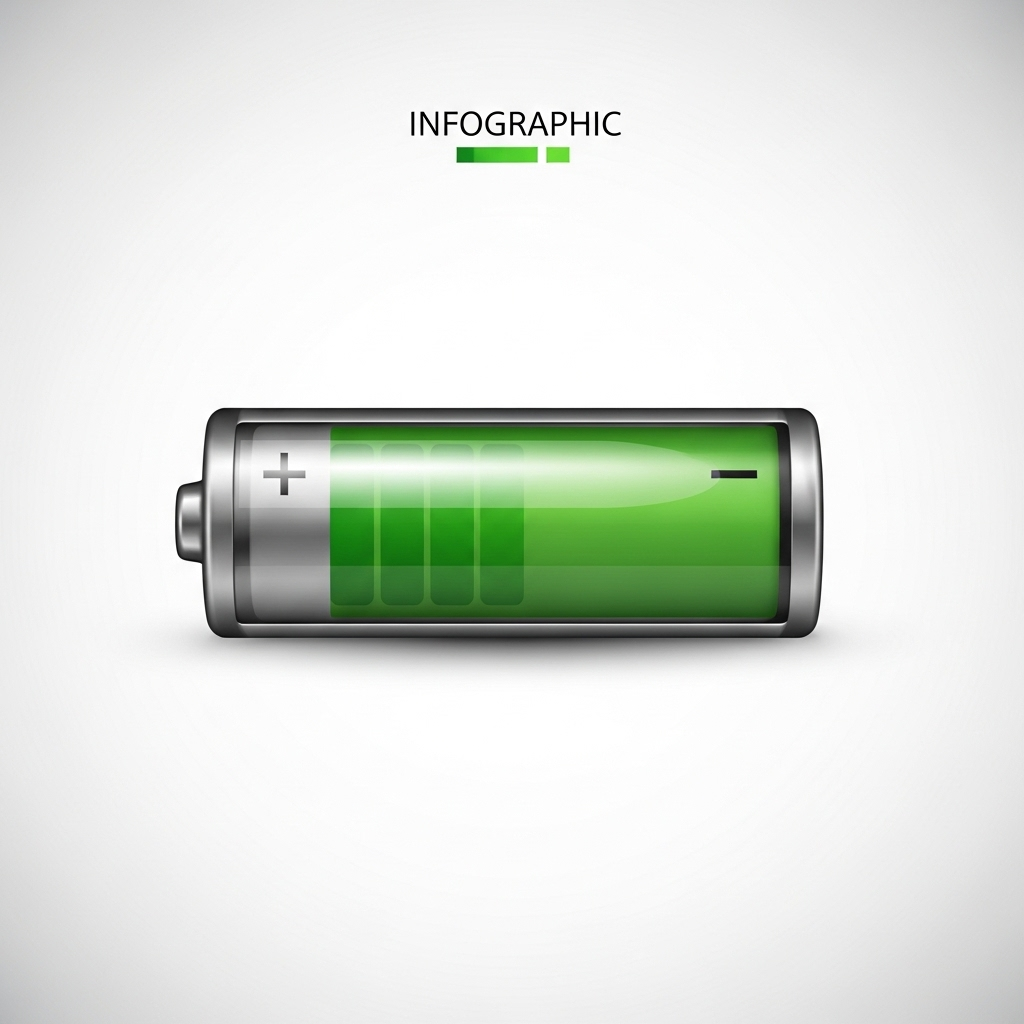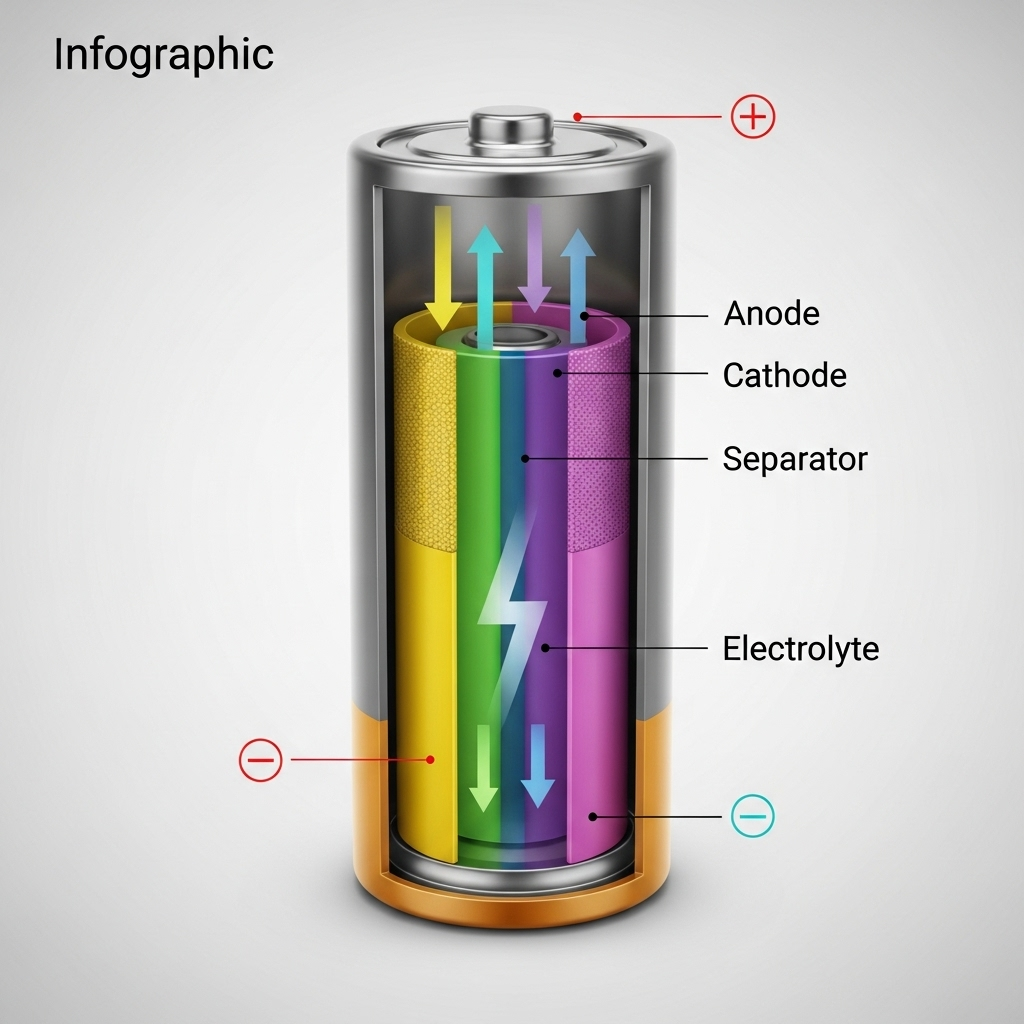Your energy storage system is a dynamic asset, and its performance is closely tied to the environment. A 'set it and forget it' approach to your battery's State of Charge (SOC) settings can shorten its lifespan and reduce its efficiency. Temperature, in particular, has a profound effect on battery health. By strategically adjusting your SOC charge range for hot summers and cold winters, you can protect your investment and ensure your system operates at its best for years to come.
The Impact of Temperature on LiFePO4 Battery Chemistry
Temperature directly influences the speed of electrochemical reactions inside your LiFePO4 battery. Both extreme heat and cold introduce unique challenges that a smart seasonal strategy can mitigate.
Challenges in Hot Weather
High ambient temperatures, especially when combined with the heat generated during charging and discharging, accelerate the aging process of a battery. Charging your battery to a full 100% SOC in extreme heat places significant stress on the cells. This stress speeds up chemical degradation, leading to a faster decline in capacity. Over time, this constant strain can noticeably shorten the battery's operational life. Managing this thermal stress is a key aspect of maintaining system health, a principle echoed in broader energy system design, as noted in the IEA's Technology Roadmap - Solar Heating and Cooling, which emphasizes the importance of thermal management.
Hurdles in Cold Weather
Cold temperatures present a different set of problems. As the temperature drops, the electrochemical reactions inside the battery slow down. This results in a temporary reduction in available capacity and a more pronounced voltage drop under load. The most significant danger, however, is charging a LiFePO4 battery when its internal temperature is below freezing (0°C or 32°F). Doing so can cause lithium plating, a condition where metallic lithium deposits form on the anode. This damage is irreversible, permanently reducing capacity and posing a safety risk.
A Practical Strategy for Summer: Protecting Your Battery from Heat
During hot months, the primary goal is to minimize thermal stress and slow down heat-related degradation. A conservative SOC window is your best tool for this.
Lowering the Upper SOC Limit
A simple yet highly effective tactic is to lower the maximum charge limit. Instead of pushing the battery to 100%, consider setting the upper limit to 85% or 90%. Keeping the battery out of this high-stress top range, especially during the hottest parts of the day, significantly reduces the rate of degradation. This small adjustment is a powerful way to promote battery longevity.
Adjusting the Lower SOC Limit
In conjunction with a lower top limit, maintaining a slightly higher bottom limit can also be beneficial. For example, setting your low cutoff to 25% or 30% instead of a deeper 20% helps keep the battery operating in its most stable and least-stressed SOC range. A narrower operational window, such as 30% to 85%, acts as a protective shield for your battery during the demanding summer season.
A Smart Approach for Winter: Navigating Cold-Weather Challenges
In winter, the strategy shifts from mitigating heat to preventing cold-related damage and compensating for reduced performance. This requires a different approach to your SOC settings.
The Critical Rule: No Charging Below Freezing
This rule is absolute. Never charge a LiFePO4 battery if its cell temperature is at or below 0°C (32°F). Most quality Battery Management Systems (BMS) include low-temperature charging protection to prevent this automatically. If your system lacks this feature or is in an unheated location, you must manage it manually. Using battery heating pads or insulated enclosures can help keep the battery within a safe operating temperature range before charging begins.
Adapting Your SOC Window for the Cold
Since heat stress is no longer the primary concern, you can safely use a wider SOC window in winter. Setting a higher upper limit, such as 95% or even close to 100%, is generally acceptable. This helps you maximize the energy harvested from limited winter sun. You can also use a lower cutoff, like 20%, to get the most out of your stored energy. This wider window helps compensate for the temporary capacity reduction caused by the cold. For a deeper look at how various factors influence system output, reviewing a comprehensive guide on solar storage performance can provide valuable context for optimizing your setup year-round.
Implementing Seasonal SOC Adjustments: A Summary Table
Adapting your system to environmental conditions improves its operational flexibility. This concept is vital for large-scale grids, as detailed in the IEA's China Power System Transformation report, and it applies just as well to your home energy system. Here is a quick reference for seasonal adjustments.
| Season | Key Challenge | Recommended Upper SOC Limit | Recommended Lower SOC Limit | Primary Action |
|---|---|---|---|---|
| Summer (Hot) | Heat Degradation | 85% - 90% | 25% - 30% | Reduce cell stress |
| Winter (Cold) | Reduced Capacity & Plating Risk | 95% - 100% | 20% - 25% | Maximize usable capacity safely |
| Spring/Autumn (Mild) | Balanced Conditions | 90% - 100% | 20% - 25% | Balance longevity and capacity |
Disclaimer: These are general recommendations. Always consult your battery and inverter manufacturer's specifications.
Beyond SOC: System-Level Considerations
While SOC management is crucial, it's part of a larger picture of system health. Modern energy systems are becoming increasingly sophisticated, sometimes using advanced algorithms to optimize performance, a trend also seen in large-scale renewables according to IRENA's Renewable Power Generation Costs in 2024.
The Role of the Battery Management System (BMS)
A high-quality BMS is the brain of your battery. It serves as the first line of defense, providing essential protections like over-voltage, under-voltage, and high/low-temperature cutoffs. Your seasonal SOC strategy works in partnership with the BMS to optimize performance within these safe operating limits.
Integrating with Your Inverter and Charger
Your SOC limits are not set on the battery itself but within the software of your inverter or charge controller. Familiarize yourself with your equipment's settings menu. Most modern inverters make it easy to program and adjust these parameters. Refer to your user manual for specific instructions on how to define the charge and discharge limits.
Monitoring and Automation
Make seasonal adjustments a part of your regular maintenance schedule. A simple calendar reminder twice a year—once in late spring and again in late autumn—is an effective way to stay on top of it. Some advanced energy storage systems allow for automated adjustments based on temperature sensor readings, simplifying the process and ensuring your battery is always operating under optimal conditions.
Smarter Energy Management for Long-Term Value
Treating your energy storage system as a static installation is a missed opportunity. By actively managing your battery's SOC window in response to seasonal temperature changes, you move from a passive owner to a smart system operator. This simple, proactive strategy of adjusting for heat and cold protects your battery from unnecessary stress, enhances its long-term reliability, and ultimately maximizes the return on your investment in energy independence.
Disclaimer: This article is for informational purposes only and does not constitute financial or technical installation advice. Consult with a qualified professional before making changes to your system.
Frequently Asked Questions
How often should I adjust my SOC settings?
A good practice is to adjust them twice a year. The first adjustment should be in late spring as temperatures consistently rise, preparing for summer. The second should be in late autumn as temperatures begin to drop, preparing for winter.
What happens if I charge my LiFePO4 battery below 0°C (32°F)?
Charging a LiFePO4 battery below freezing causes a harmful reaction called lithium plating. This process involves metallic lithium building up on the anode, which is irreversible. It permanently reduces the battery's capacity, compromises its safety, and can eventually lead to an internal short circuit.
Does lowering my max SOC in summer reduce my available energy?
Yes, it slightly reduces your daily usable capacity. For instance, using an 85% upper limit instead of 100% means you are using 15% less of the total capacity on a given day. This is a strategic trade-off. You exchange a small amount of daily capacity for a significant gain in the battery's long-term health and overall lifespan.
My BMS has temperature protection. Do I still need to adjust SOC?
Yes. The BMS provides essential safety protection to prevent immediate, catastrophic damage, such as stopping a charge at -5°C. Seasonal SOC adjustments are an optimization strategy designed for longevity. By operating within the safe limits set by the BMS, you actively reduce cumulative stress and slow the natural aging process, maximizing the value of your investment.





Leave a comment
All comments are moderated before being published.
This site is protected by hCaptcha and the hCaptcha Privacy Policy and Terms of Service apply.